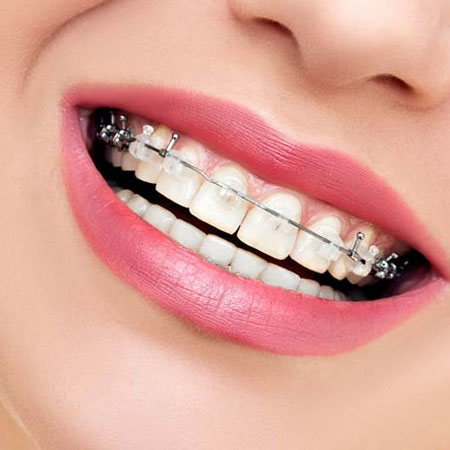Orthodontics is a specialized field of dentistry that focuses on correcting irregularities in the alignment of teeth and jaws to improve both oral health and aesthetics. Whether you're dealing with crowded teeth, an overbite, underbite, or any other misalignment issue, orthodontic treatment can help you achieve a straighter, healthier smile. In this comprehensive guide, we'll delve into the intricacies of orthodontics, exploring what it is, how it works, the various treatment options available, and the benefits it offers.
What are Orthodontics?
Orthodontics is a branch of dentistry that deals with the diagnosis, prevention, and correction of misaligned teeth and jaws. The word "orthodontics" is derived from the Greek words "ortho," meaning straight or correct, and "odont," meaning tooth. Essentially, orthodontics focuses on aligning teeth and jaws to achieve optimal oral function and aesthetics.

Role of an Orthodontist
An orthodontist is a dental specialist who has undergone additional training beyond dental school to become an expert in orthodontics. These professionals possess the knowledge, skills, and experience necessary to diagnose orthodontic issues and develop personalized treatment plans to address them effectively.
Common Orthodontic Issues
Orthodontic problems can manifest in various forms, including:
- Crowded Teeth: This occurs when there is insufficient space in the jaw to accommodate all the teeth, leading to overcrowding and misalignment.
- Overbite: An overbite refers to the protrusion of the upper front teeth over the lower front teeth when the jaws are closed.
- Underbite: Conversely, an underbite occurs when the lower front teeth protrude beyond the upper front teeth.
- Crossbite: A crossbite occurs when some of the upper teeth sit inside the lower teeth rather than outside when the jaws are closed.
- Open Bite: An open bite is characterized by a gap between the upper and lower front teeth when the jaws are closed.
- Misplaced Midline: This occurs when the centerline of the upper and lower teeth fails to align properly.
Orthodontic Treatment Options
Orthodontic treatment aims to gradually move teeth into their correct positions using various appliances and techniques. Some common treatment options include:
- Traditional Braces: These consist of metal brackets bonded to the teeth, connected by wires and bands. Braces apply gentle pressure to gradually shift teeth into alignment.
- Clear Aligners: Clear aligners, such as Invisalign, are removable plastic trays that fit snugly over the teeth. They offer a more discreet alternative to traditional braces and are virtually invisible when worn.
- Lingual Braces: Lingual braces are similar to traditional braces but are attached to the back surfaces of the teeth, making them less visible.
- Retainers: After orthodontic treatment, retainers may be prescribed to maintain the results and prevent teeth from shifting back to their original positions.
Benefits of Orthodontic Treatment
Orthodontic treatment offers numerous benefits beyond just aesthetics, including:
- Improved Oral Health: Straighter teeth are easier to clean, reducing the risk of tooth decay, gum disease, and other oral health issues.
- Enhanced Functionality: Properly aligned teeth and jaws contribute to better chewing and speaking abilities, as well as overall oral function.
- Boosted Confidence: A straight, beautiful smile can significantly enhance self-esteem and confidence, leading to improved social and professional interactions.
- Prevention of Dental Problems: Orthodontic treatment can help prevent or alleviate various dental problems, such as jaw pain, abnormal tooth wear, and temporomandibular joint disorders (TMJ).
Orthodontics plays a crucial role in improving both the appearance and functionality of your smile. By addressing misalignment issues, orthodontic treatment not only enhances your oral health but also boosts your confidence and overall well-being. If you're considering orthodontic treatment, consult with a qualified orthodontist to explore your options and embark on the journey to a straighter, healthier smile.
What is orthodontics, and how does it differ from regular dentistry?
Orthodontics is a specialized branch of dentistry focused on correcting misaligned teeth and jaws. Unlike regular dentistry, which deals with general oral health, orthodontics specifically addresses issues related to teeth alignment and bite function.
What are the common orthodontic problems that Obulreddy Oro Dental Hospital treats?
Obulreddy Oro Dental Hospital treats a wide range of orthodontic issues, including crowded teeth, spacing between teeth, overbites, underbites, crossbites, and jaw misalignments.
What age is appropriate for orthodontic treatment?
Orthodontic treatment can be effective at any age, but the ideal time to start varies depending on the individual's needs. Generally, children undergo treatment once their permanent teeth start to come in, while adults can also benefit from orthodontic treatment to correct misalignments.
What types of orthodontic treatments are available at Obulreddy Oro Dental Hospital?
Obulreddy Oro Dental Hospital offers a variety of orthodontic treatments, including traditional metal braces, ceramic braces, lingual braces, clear aligners (such as Invisalign), and other advanced orthodontic appliances.
How long does orthodontic treatment typically take?
The duration of orthodontic treatment varies depending on the severity of the orthodontic issues and the chosen treatment method. On average, treatment can last anywhere from several months to a few years.
Are orthodontic treatments painful?
Discomfort may occur during orthodontic treatment, particularly after adjustments or when new appliances are placed. However, any discomfort is usually temporary and can be managed with over-the-counter pain relievers and orthodontic wax.
How often do I need to visit Obulreddy Oro Dental Hospital during orthodontic treatment?
The frequency of visits depends on the stage of treatment and the type of orthodontic appliances used. Generally, patients are scheduled for appointments every 4 to 8 weeks for adjustments and progress checks.
Will I need to wear retainers after orthodontic treatment?
Yes, wearing retainers after orthodontic treatment is essential to maintain the results and prevent teeth from shifting back to their original positions. Your orthodontist at Obulreddy Oro Dental Hospital will provide detailed instructions on retainer use.
Does Obulreddy Oro Dental Hospital accept insurance for orthodontic treatment?
Obulreddy Oro Dental Hospital works with various insurance providers, and coverage for orthodontic treatment may vary depending on your insurance plan. It's recommended to inquire about insurance coverage and payment options during your initial consultation.
